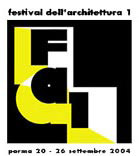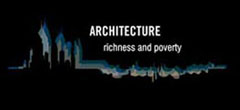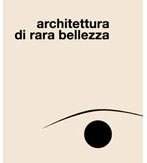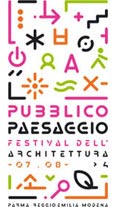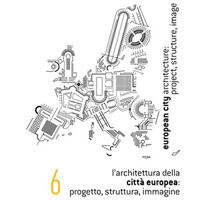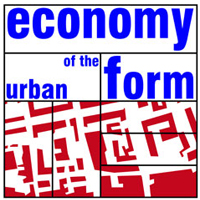You are in: Home page > Festival Archive
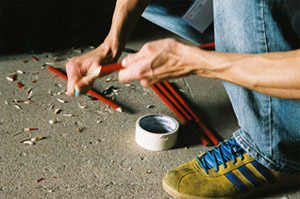
The Festival of Architecture of Parma was born out of a tradition of organisation and research which since 1987 has promoted activities of comparison at an international level on the themes of architectural and urban design.
Almost two decades of experience that began with the seminars La Città del Teatro (1987, 1990, 1994 – Edizioni CLUP and Abitare Segesta Milano) an investigation into the relationship between the theatrical type–dramaturgy–city and ended up in those denominated CITTAEMILIA whose 1998 edition, Sperimentazioni Architettoniche per un’Idea di Città, was dedicated to the system of strategic sites for the development of Emilian cities from Piacenza to Modena (Abitare Segesta Milano 2000), while that of 2000, S.S.9, Via Emilia – Progetti architettonici e nuovi luoghi lungo la via Emilia tra città e città, brought into focus the problems of settlement evolution along the historical stretch of the poleogenetic consular road (Abitare Segesta Milano 2001), and lastly, within the fledgling Faculty of Architecture of Parma, at the review entitled Architettura/Europa 2003.
The initiatives cited here have involved over time hundreds of lecturers, researchers and students from various Italian and European faculties of architecture, resulting in a network of contacts and referents interested in the exploratory approach of an architecture made natural through an idea of city, context and culture.
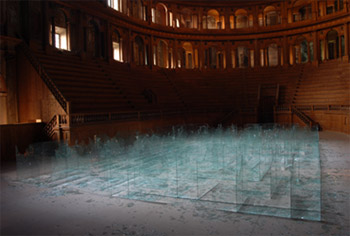
In due course, having superseded the specific seminar occasion, other opportunities of research and renewed project experimentation in subsequent workshops further fed and consolidated this network of referents united by an interest in an architecture that is aware of its own urban role.
From this set of activities, human resources, experimental paths, even in the ways and forms of organizing comparisons and the dissemination of the results, the Festival formula seemed natural, as the most congenial and efficient way to acknowledge the evolution of a tradition of cultural activities able to positively foster an increase in the general debate on architecture and the knowledge of it on the part of a burgeoning and knowledgeable circle of interlocutors.
Already, by its third edition, the Festival was heading towards a development of its capacities for research, narration, plus an original technique of investigating and disseminating architectural phenomena. First and foremost the new setting: different urban contexts (Parma, Reggio Emilia, Modena) for a metropolitan Festival idea. To leave the dimension of uniqueness, the cultural and environmental microcosm, setting up antennae closer together but sufficiently far apart to pick up different wavelengths.
Increasingly, the Festival was encouraging a sort of circuit of meetings and critical relations between its curators and other subjects involved. Something always being added to the Festival community.
The fourth edition featured a series of novelties: the Festival adopted a biennial pattern (07-08) within which, given a general reference theme, painstaking and articulate research activities were carried out and related events created, in line with a process of advancement based on continuous feedback in its successive phases.
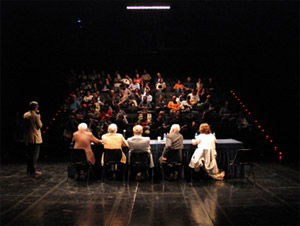
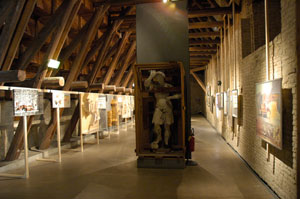
The fifth edition (09-10) confirmed the biennial pattern of its predecessors. The guiding thread linking the research and seminars was the theme Community/Architecture.
In 2009 the following appointments were to follow.
At the end of June, the launch of an International Call for Papers entitled Community-Architecture. Destined for the international scientific world, it attracted thematic and research contributions to be debated as the event progressed.
Between September and October a cycle of CONFERENCES/Meetings as an introduction to the literary, sociological and philosophical aspects of the Community/Architecture theme.
On the 26-27 October the first ever CITTAEMILIA FORUM took place – Community Places: architecture, society, territory, a territorial comparison of problems, planning opportunities and trends starting from the general theme.
From 23 to 27 November INVESTIGATORY SEMINARS were held at each of the Festival cities, Parma, Reggio Emilia and Modena, where the following 5 themes were explored:
Architecture and Community Tradition in which Italian architects demonstrated, through their works, an interpretation of a community idea with reference to a defined context;
Open Doctorate Tests consisting of three different stages put together in collaboration with Doctorate schools of Architectural Composition;
Architecture Recounted: an appointment already tried out as part of the Festival at which 3 Italian and as many foreign architects showed projects to contribute to the community;
Critical Workshops which tackled three different themes, historical experience and contemporary aspects of the community/architecture relationship, a sociological observatory of new community inductors, and eco-virtuous communities;
Project Workshops – trying out community settlement models at which 9 Italian and international Faculties of Architecture exhibited research themes which were part of university courses and workshops on the theme.
In 2010 EXHIBITIONS took place on the Community-Architecture theme..
For the University Project Workshops section, the exhibition DECLINAZIONI ARCHITETTONICHE DELL'ESPERIENZA COMUNITARIA instigated comparisons on the theme of the community among different European schools, which showed their most significant works.
For the section, “Witnesses of Architecture”, an exhibition on HERMAN HERTZBERGER. ARCHITECTURE FOR THE COMMUNITY investigated the continuity of research that adopts the community value as interpretative constant of the architecture project; the exhibition RAFFAELE PANELLA. ARCHITECTURE FOR THE CITY: EMILIAN PROJECTS explored the relationship between the works and the context of this Roman architect.
For the section, Open Doctorate Tests, the exhibition HOUSES, COURTS, SYSTEMS. THE IDEAL HOME AND THE HOME IDEAL IN SPACE AND TIME looked into the reasons behind co-housing in today’s residential architecture; the exhibition THE IDEA OF METAPHOR IN THE WORK OF OSWALD MATHIAS UNGERS. FROM THE MEGAFORM TO THE THEMING OF ARCHITECTURE concerned the capacity of Ungers’ architecture to interpret the complexity of the urban phenomenon; the exhibition HANS SCHAROUN. VOLKSHAUS, STADTLANDSHAFT, PHILARMONIE showed and revealed the compositional artifices of the urban works by the great German architect; the exhibition COMMUNITY/ARCHITECTURE. MODELS AND SPATIAL MUTATIONS examined the relationship between ideas of community and neighbourhood in certain sample projects.
For the Critical Workshops section the exhibitions EMILIAN COMMUNITY WORKSHOPS: THE HOUSING ESTATES OF THE RECONSTRUCTION PERIOD in collaboration with the Architects’ Associations of Parma, Reggio Emilia and Modena, and ARCHITECTURE BETWEEN THE HOUSES, on the INA-Casa estates in Emilia.
For the section Analysis of Realized Works of Architecture, the exhibition CARABANCHEL 11, SOCIAL HOUSING A MADRID which illustrated the design and compositional and spatial nature of the new neighbourhood by the Morphosis Group in the suburbs of Madrid.
For the International Call for Papers section, the exhibition COMMUNITY/ARCHITECTURE compared international research contributions from 57 architectural groups.
The exhibitions were accompanied by debates, round tables, the presentation of official Festival catalogues as well as various other parallel events including a cycle of video documentaries on major residential quarters in Europe after the Second World War entitled NEIGHBOURHOOD PROJECTS OVER TIME: BETWEEN PROVOCATION AND TRADITION.
From 26 November to 12 December the Workshop COMMUNITY EQUIPMENT took place, which saw 30 students debating the theme of ephemeral and reversible equipment in degraded suburban areas of the three Festival cities.
On 3 December in Parma and the 10 December in Modena international conferences were held entitled SEVEN LESSONS FOR PARMA and FROM THE FUNCTIONAL CITY TO THE CITY OF ARCHITECTURE as a preview of the theme of the sixth edition of the Festival of Architecture: ARCHITECTURE OF THE EUROPEAN CITY: PROJECT, STRUCTURE, IMAGE.
In 2011, the following appointments took place.
Wednesday 19 October 2011 at the Palazzo del Governatore in Parma an international seminar entitled EUROPE/ITALY. THE ARCHITECTURAL PROJECT IN EUROPEAN SCHOOLS .
This was a first investigation to compare project research and teaching methods as developed in different national contexts.
Each School/Workshop invited was prompted to reflect upon: 1) the contribution of a tradition of studies and/or of reference architects and scholars; 2) the methods of approaching the project aimed at disciplinary transmissibility; 3) the themes with which the methods are translated within the project practice and the verification of the distance between tradition and topicality.
Amongst participants from the European schools were: Francisco Barata, Faculdade de Arquitectura Universidade de Porto (PORTUGAL); Prof. Aydan Balamir, Faculty of Architecture, Middle East Technical University of Ankara (TURKEY); Prof. Jo Coenen, Faculty Humanities & Sciences of Maastricht University - Department of Architecture (NETHERLANDS); Prof. Trevor Harris, Aalto University School of Architecture - Helsinki (FINLAND); Prof. Anastassios M. Kotsiopoulos, School of Architecture, Aristotle University of Thessaloniki (GREECE); Professors Manuel Iñiguez e Alberto Ustarroz, Escuela Técnica Superior de Arquitectura de Donostia-San Sebastian (SPAIN), Joachim Schultz-Granberg, Munster School of Architecture (GERMANY).
On Thursday 20 October 2011 at the Teatro Fondazione San Carlo in Modena an international seminar took place entitled 7 EUROPEAN CITIES FOR ARCHITECTURE at which were presented projects and studies on the cases of Aachen, Padua, Syracuse, Strasbourg, Tallinn, Trento, and Parma.
This was a comparison of ways of reading urban contexts through the use of a language of description that takes into account the figurative and symbolic significance of the European city.
Taking part were Uwe Schröder, from the Facultät für Architectur (AACHEN – Germany), Eleonora Mantese from the IUAV of Venice (PADUA – Italy), Vincenzo Latina, from the Faculty of Architecture of Syracuse (SYRACUSE, Italy), Cristiana Mazzoni, from the École Nationale Supérieure d'Architecture de Strasbourg (STRASBOURG - France), Andres Alver, from the Estonian Academy of Arts, Faculty of Architecture (TALLINN – Estonia), Armando Dal Fabbro, from the IUAV of Venice (TRENTO - Italy), Carlo Moccia, from the Faculty of Architecture of Bari Polytechnic (PARMA – Italy), Renato Rizzi, of the Faculty of Architecture of the IUAV of Venice (PARMA – Italy), Jannis Tsiomis, from the École d’Architecture of Paris – La Villette (STRASBOURG - France).
This was followed by a presentation of studio cases at a round table entitled WAYS OF URBAN DESIGN which included Alberto Ferlenga (discussant) of the Faculty of Architecture of the IUAV of Venice, Carles Muro from the Escuela Tecnica Superior de Arquitectura of Barcelona and Marcello Panzarella from the Faculty of Architecture of the University of Palermo.
On Friday 21 October 2011 at the Ex Synagogue of Reggio Emilia the themeDESIGNING THE CONSTRUCTED: ARCHITECTURAL STRATEGIES FOR THE COMPACT CITY was tackled. This theme was part of the scientific investigation of some PhD research financed by the Spinner consortium 2013 of the Emilia Romagna region, and an international case study.
For this reason, in the morning Applications for the Doctoral Programme were dealt with and in the afternoon there was a seminar presenting the study cases. The architects present and the projects presented were:
Péter Kis, Csaba Valkai, Budapest Social Housing (HUNGARY); AART Architects, Bikuben Student Residence, Ørestad-Copenaghen (DENMARK); Fernando Carrascal, Josè Ma Fernández de la Puente, 63 Viviendas Sociales, Sevilla (SPAIN); Soeters Van Eldonk architecten, Master plan for eastern Veenendaal (NETHERLANDS); Hondelatte Laporte Architectes, Les Diversités, 21 logements sociaux + 6 locaux d’activités, Bordeaux (FRANCE); LAN Architecture, 72 Social Dwellings, Bègles (FRANCE); m&a architetti, Marilena Magalotti, Piera Patera, Reconversion of the Ex-Faema Area, Milan (ITALY); Eduard Bru i Bistuer, Neus Lacomba Mongé, Victor Setoain, Social Dwellings, Barcelona (SPAIN).
Lastly, Antonella Gallo, from the Faculty of Architecture of the IUAV of Venice, Luca Reale, from the Faculty of Architecture of Valle Giulia, Rome and Carlo Quintelli, from the Faculty of Architecture of Parma became involved in an exhaustive debate on the theme.
On Saturday 22 October 2011, again at the Ex Synagogue in Via dell'Aquila, there was a seminar for sector operators, from legislators to construction companies, on rules, norms and tools through which theoretical-disciplinary reflection can be translated into "good building practice", entitled: Reflections on tools to construct the territory.
This discussion was followed up by a series of concrete examples taken from the experiences of building cooperatives from Emilia in various national contexts.
The Figures of the Festival
FA1 Eteroarchitettura, Parma, 20-26 September 2004
- 25 venues,
- 139 events,
- 200 participants,
- 5,000 visitors,
- 30,000 visitors online,
- 1 publication
FA2 Architettura Ricchezza e povertā, Parma, 19-25 September 2005
- 25 venues,
- 127 events,
- 250 participants,
- 6,500 visitors,
- 30,000 visitors online,
- 6 publications
FA3 Architettura di rara bellezza, Parma, Reggio Emilia, Modena, 23-29 October 2006
- 3 cities with 14 venues,
- 79 events,
- 300 participants,
- 17,000 visitors,
- 52,000 visitors online,
- 3 publications
FA4 Public landscape 2007-2008
Events in 2007:
- Parma, 29 November - 1 december;
- Reggio Emilia, 6-7 December;
- Modena, 13-14 December
Events in 2008:
- Parma, Reggio Emilia, 18 October-9 November;
- Modena, 18 October-2 November
Data:
- 3 cities with 30 venues,
- 85 events,
- 350 participants,
- 17,500 visitors,
- 390,000 visitors online,
- 3 publications
FA5 Community/Architecture 2009-2010
Events in 2009:
- Parma, 23-24 November;
- Reggio Emilia, 26-27 October (CittāEmilia Forums), 25-26 November;
- Modena, 27-28 November
Events in 2010:
Parma, Reggio Emilia, Modena, 26 November-12 December
Data:
- 3 cities with 16 venues,
- 43 events,
- (2009) 200 participants,
- (2009) 11,000 visitors,
- (2009) 195,000 visitors online,
- 4 publications
FA6 EUROPEAN CITY ARCHITECTURE, Parma, Reggio Emilia, Modena, 19-22 October 2011
- 3 cities with 16 venues,
- 12 events,
- 110 participants,
- 2,500 visitors,
- 70,000 visitors online,
- 1 publication



